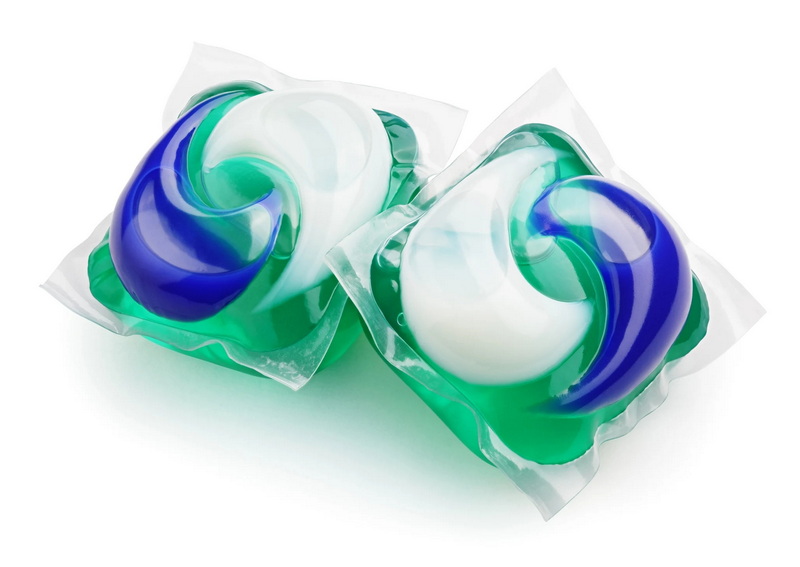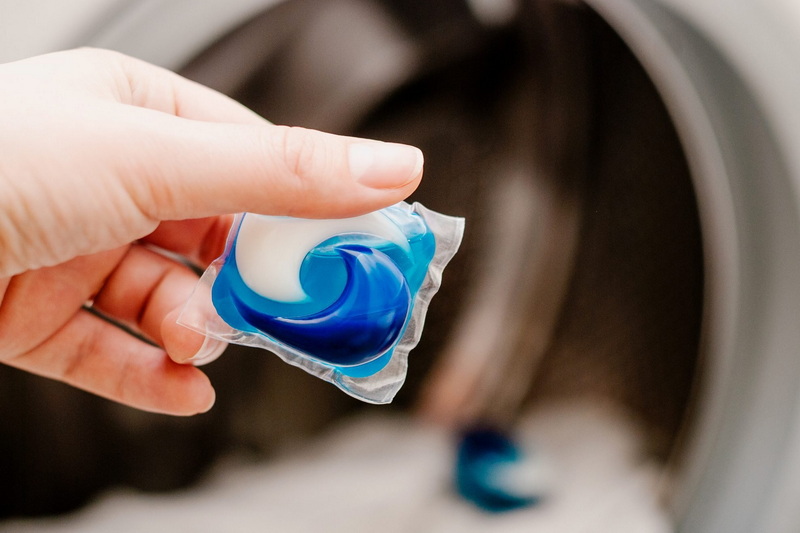Dongguan UFine Daily Chemical Co.,Ltd.
- All
- Product Name
- Product Keyword
- Product Model
- Product Summary
- Product Description
- Multi Field Search











Content Menu
● Why Are Laundry Pods Dangerous to Eat?
● Health Risks of Consuming Laundry Pods
● Prevention Tips to Avoid Accidental Ingestion
● What to Do If Someone Eats a Laundry Pod?
● How Are Laundry Pods Made Safer?
● The Psychological and Social Factors Behind Laundry Pod Incidents
● Environmental Considerations and Proper Disposal
● Alternatives to Laundry Pods
● FAQ
>> 1. What should I do immediately if my child eats a laundry pod?
>> 2. Why do laundry pods look like candy?
>> 3. Can laundry pods harm the skin or eyes?
>> 4. Are laundry pods more dangerous than liquid or powder detergent?
>> 5. How can I prevent my family from accidentally ingesting laundry pods?
Laundry pods, also known as detergent pods or capsules, have become a popular choice for many households due to their convenience and pre-measured dosage. However, despite their ease of use and effectiveness, there is a crucial and urgent warning surrounding these products: Don't eat laundry pods. This article explores why laundry pods are dangerous if ingested, the risks involved, prevention tips, what to do in case of ingestion, and how to keep them away from children and vulnerable individuals.

Laundry pods are small, water-soluble packets that contain concentrated laundry detergent. They come in colorful, often brightly colored designs, combining detergent, stain removers, and other cleaning agents in a single, easy-to-use package. Users simply place one pod into the washing machine drum before adding clothes—no measuring or pouring is needed.
Despite their convenience, laundry pods are toxic when ingested. There are several reasons why they pose a significant health risk:
- Chemical Concentration: Pods contain highly concentrated detergent formulas. Unlike liquid or powder detergents, the chemical concentration in pods is much higher, increasing the hazard to humans when ingested.
- Toxic Ingredients: The detergents contain ingredients such as surfactants, enzymes, bleaching agents, and fragrances that are harmful if swallowed.
- Capsule Design: Their colorful, squishy appearance combined with a pleasant scent can attract children or individuals with dementia or cognitive impairments, who may mistake them for candy or food.
Eating laundry pods can cause a wide range of health issues. Some of the symptoms and dangers include:
- Vomiting and Nausea: The toxic chemicals irritate the digestive system, causing vomiting.
- Breathing Difficulties: If detergent is inhaled or aspirated into the lungs, it can cause coughing, wheezing, or even chemical pneumonitis.
- Burns and Ulcers: The concentrated detergent can cause chemical burns to the mouth, throat, esophagus, and stomach lining.
- Neurological Effects: Some ingredients may cause drowsiness, lethargy, or neurological symptoms in severe cases.
- Eye and Skin Irritation: If a pod bursts on the skin or near the eyes, it can cause irritation, redness, or burns.
- Potential Fatalities: In rare but serious cases, ingestion can be life-threatening, requiring immediate medical attention.
- Children: Young children under five years old are most at risk because they are more likely to put objects in their mouths.
- Individuals with Cognitive Disorders: People with dementia, Alzheimer's, or other cognitive impairments.
- Curious Teens and Adults: Accidental or intentional ingestion can happen among teenagers or adults in some cases, including for dangerous challenges.
Keeping laundry pods out of reach and making use of safety measures can prevent accidental ingestion:
- Store Pods Safely: Always keep laundry pods in a locked cabinet or a place that children and vulnerable individuals cannot access.
- Use Child-Resistant Packaging: Choose pods that come in child-proof containers.
- Educate Family Members: Teach children and family members about the dangers of laundry pods.
- Keep Pods in Original Packaging: The original container usually has safety warnings and child-proof lids to reduce risk.
- Avoid Transferring Pods to Other Containers: Don't put pods in bowls or cups where they might appear like food.
Ingesting a laundry pod requires immediate action:
1. Call Poison Control: Contact your local poison control center or emergency medical services immediately.
2. Do Not Induce Vomiting: This may cause more damage to the throat and esophagus.
3. Rinse Mouth: If the person is conscious and alert, rinse their mouth with water.
4. Avoid Giving Food or Drink: Unless advised by a medical professional.
5. Seek Emergency Medical Help: In all cases of ingestion, professional evaluation is necessary due to the severity of possible symptoms.
Manufacturers and regulators are working to improve laundry pod safety by:
- Improving Packaging: Child-resistant, resealable containers are now more common.
- Changing Pod Appearance: Making pods less colorful or less candy-like in appearance.
- Adding Bittering Agents: Chemicals that create an unpleasant taste to deter ingestion.
- Public Awareness Campaigns: Educating consumers through safety messages and warnings on packaging.

There is an additional side to the laundry pod ingestion issue that is less discussed but important to acknowledge. Some teenagers and young adults ingest pods intentionally due to dangerous social media trends, challenges, or experiments with risky behaviors. These incidents highlight the need for awareness beyond physical safety measures. Educating youths about the severe health risks is essential to prevent such cases.
Furthermore, for adults with cognitive or mental health issues, lapses in judgment can lead to accidental ingestion. This reinforces the importance of family vigilance and tailored care plans to ensure household safety.
Besides health risks, improper handling or disposal of laundry pods can cause environmental harm. As they contain strong chemicals, leaking or discarded pods can damage aquatic life if they enter water systems. It is important to:
- Use pods responsibly and avoid spills.
- Dispose of empty containers or unused pods according to local hazardous waste guidelines.
- Do not flush pods or detergent remnants down toilets or drains.
For those concerned about safety, alternatives include:
- Liquid or Powder Detergents: These come with clear instructions and lack the candy-like appearance of pods, reducing accidental ingestion risks.
- Eco-friendly, Non-toxic Detergents: Safer for home and the environment.
- Traditional Measuring Methods: Users can control the amount of detergent, reducing over-concentration risks.
Choosing the right laundry detergent should balance convenience, safety, and environmental responsibility.
Laundry pods are an effective and convenient means of detergent delivery, but their potential toxicity means they must be handled with great care. They should never be eaten under any circumstances. Accidental ingestion, especially by children or cognitively impaired individuals, requires urgent medical attention. Proper storage, education, and attention to safety packaging are critical to preventing ingestion incidents and ensuring safe use of laundry pods.

Call poison control or emergency services immediately. Do not induce vomiting. Rinse the child's mouth and seek medical help.
Their colorful, squishy appearance and scent make them look like candy, which unfortunately attracts children and some vulnerable adults.
Yes, if a pod bursts on skin or in the eyes, it can cause irritation or burns. Rinse thoroughly with water and seek medical advice if needed.
Yes, pods contain highly concentrated chemicals, making them more hazardous if ingested compared to traditional detergents.
Keep them out of reach, in child-proof containers, educate family members on the dangers, and avoid transferring pods to other containers.